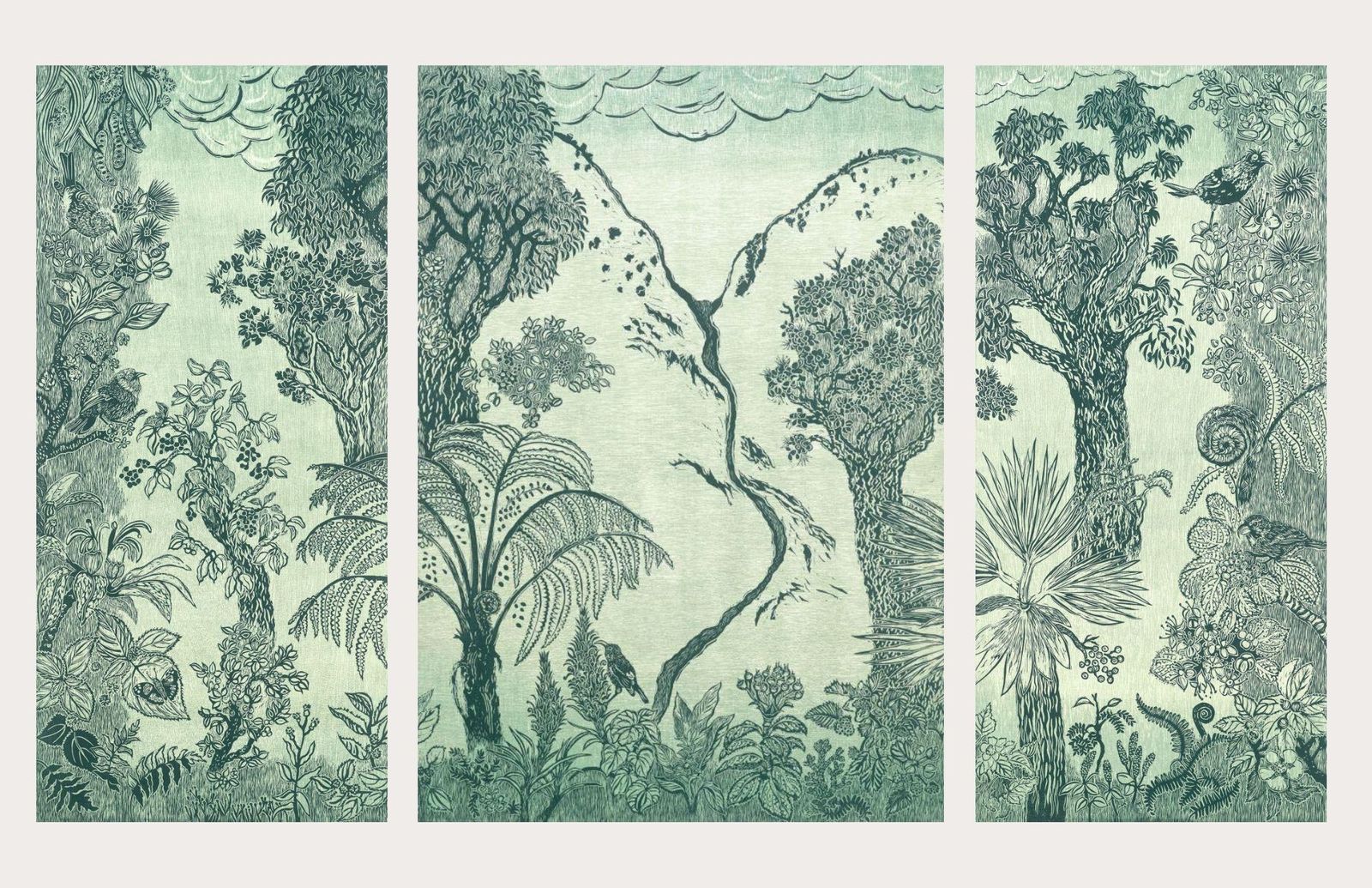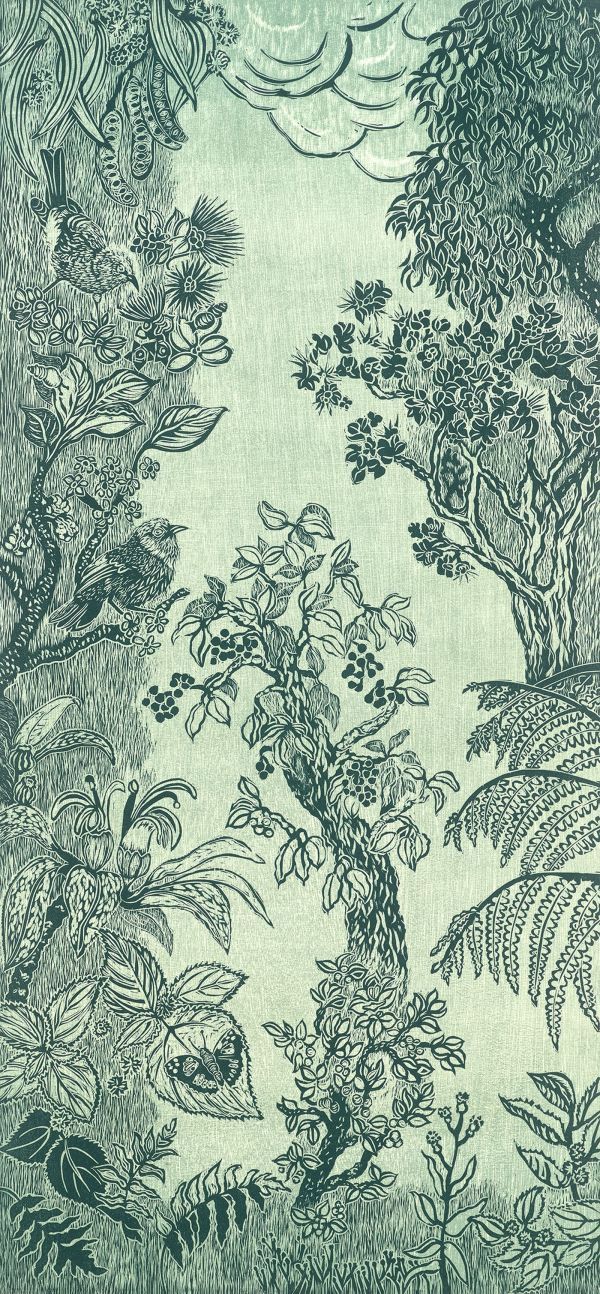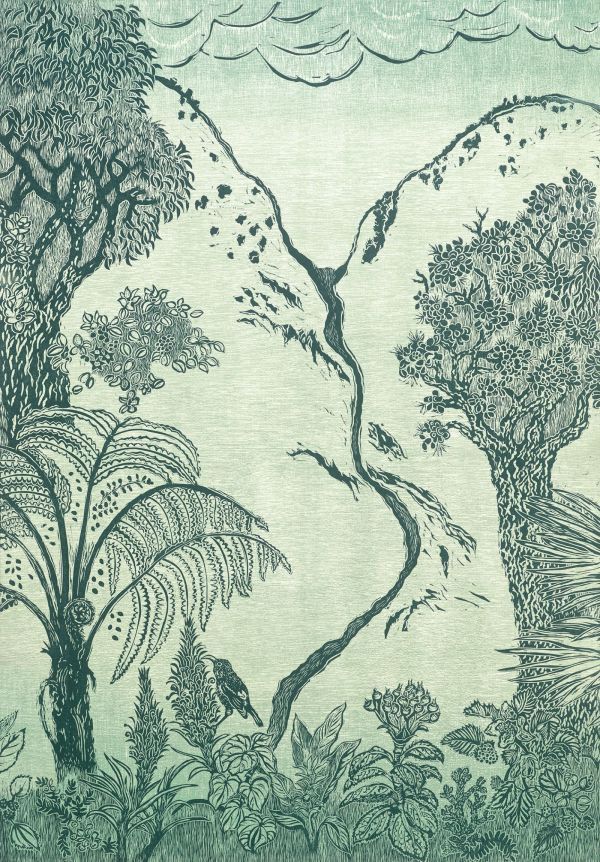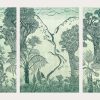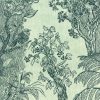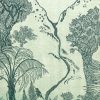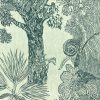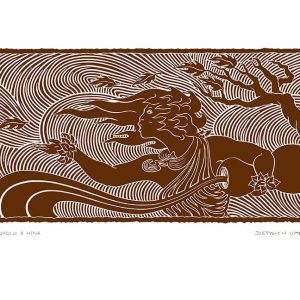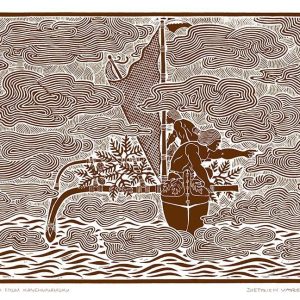The interconnection of life in the upland Maui forest is expressed in the relationship of the birds, plants, trees, snails and butterfly in this woodcut print.
The wao akua, upland mountainous forest, was traditionally a sacred realm visited for ceremonial purposes or for accessing resources, such as bird catchers collecting feathers for the garments of ali`i, members of the royalty.
Hawai`i forests are among the most delicate ecosystems in the world. Because these plants, birds and insects existed on isolated islands, they co-evolved into highly interdependent relationships that were disrupted by the introduction of species once contact from the outside world began. See the `I`iwi bird in the center panel, with its beak perfectly shaped to sip nectar from the ʻŌpelu Lobelia.
This print features two of Mauiʻs most endangered birds, the territorial ʻĀkohekohe with its dramatic crest and the Kiwikiu or Maui parrotbill. On the right panel, see the Kiwikiu perched on Kanawao ready to slice off the tops of the ripe berries for a delicious meal. Some of the 32 native species in this woodcut print are endemic, found only on Maui, and some are also found on other Hawaiian islands. ʻAwa (kava) and ʻŌlena (turmeric) are important plants that were introduced by the early Polynesians who settled on the island. These two plants were often cultivated and tended with care at lower elevations of Hawai`i forests above villages.
It has been a life-changing experience to work on projects in a few of the most pristine Hawai’i forests that have managed to survive only because of intensive management by non-profit organizations and the Department of Land and Natural Resources. In these forests, the synergy generated by infinitely interconnected relationships conveys a sensory hint of wholeness; a gestalt we have lost in our modern world.
Forest species from bottom left clockwise:
Left Panel
Asplenium Contiguum, Māmaki, Pulelehua Butterfly, Ōhā Wai, Hōʻawa, ʻAlauahio Honeycreeper bird, Auriculella Snails, ʻŌhia Lehua tree, ʻApapane Honeycreeper bird, Koa flowers and seed pods, Koa tree, ʻŌhia Lehua, Hapuʻu fern, Māmaki, Kūpaoa, Moa whisk fern, Pilo, ʻŌlapa
Center Panel
Pūkiawe, Māmake, Hapuʻu fern, ʻIliahi – Sandalwood, Koa tree, ʻŌhia Lehua tree, Loulu palm, ʻAkala raspberry, Wawaeʻiole club moss, Uluhe fern, Kanawao, ʻŌlena turmeric, ʻAwa, ʻŌpelu Lobelia, ʻIʻiwi Honeycreeper bird
Right Panel
ʻAkala raspberry, Loulu palm, Koa tree, ʻĀkohekohe – Crested Honeycreeper bird, ʻŌhia Lehua, ʻIliahi – Sandalwood, Hapuʻu, Kiwikiu – Honeycreeper bird, Kanawao, ʻŌhelo, ʻŌhelo papa strawberry, Uluhe fern, ʻĀlaʻalawai nui peperomia, Koa seedling
Mahalo nui to the following biologists, forest managers and ethnobotanists for helping me understand the wao akua of Hawai`i: Kerri Fay, Pat Bily and Gael Kanakaokai with the Nature Conservancy on Maui, J.B. Friday with the Department of Land and Natural Resources and Friends of Hakalau Forest on Hawai`i Island.
This is a multiple-block original woodcut printed on a handmade paper.
You can learn more about Andrea Pro on her bio page here.


